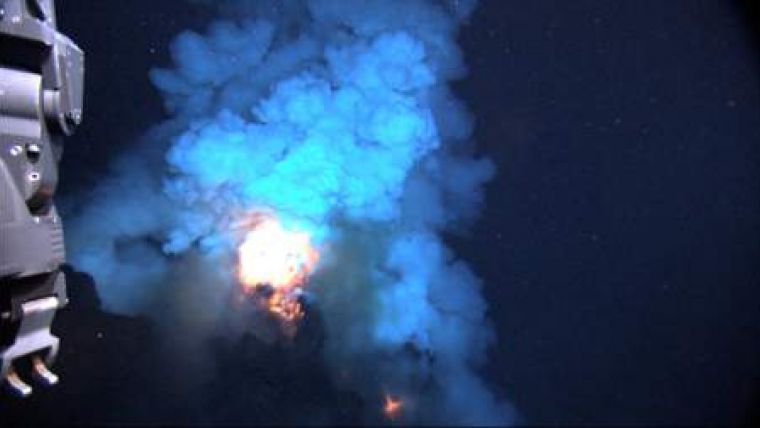Follow Live Exploration of Deep-sea Volcanoes
Anyone with a computer or mobile online device can follow 35 international scientists, led by NOAA, as they explore seafloor volcanoes. The scientists are providing live video from the deep sea and describing their discoveries as they explore submarine volcanoes in the Western Pacific’s Lau Basin, centred between Samoa, Fiji and Tonga.
A robot vehicle on the deep seafloor is sending to the research vessel and the worldwide web, live streaming video of lava landscapes and their exotic ecosystems. The expedition can be joined live online each day, weather permitting, until 25 September 2012 between 3PM and 3AM, Eastern Daylight Time online (see link below).
The science team, led by Chief Scientist Joseph Resing, Ph.D., of NOAA’s Pacific Marine Environmental Lab and the University of Washington’s Joint Institute for the Study of the Atmosphere and Ocean, is sampling and imaging deep-sea ecosystems in an area of the ocean where an explosively erupting submarine volcano was observed in 2009 at a depth of 4,000 feet. Co-chief scientist on the 2012 expedition, Robert Embley, Ph.D., of NOAA’s Pacific Marine Environmental Lab, said in 2009 that the explosions “looked like the 4th of July, underwater.”
Preliminary surveys between 2008 and 2011 revealed the Northeast Lau Basin as one of the most concentrated areas of active submarine volcanism and hot springs found anywhere on Earth.
Scientists from the United States, New Zealand, and Australia are working closely with a team led by Volker Ratmeyer, PhD, from the MARUM Center for Marine Environmental Sciences at the University of Bremen (Federal Republic of Germany), using the remotely operated vehicle (ROV) Quest 4000 to explore and characterise the ecosystems of the Northeast Lau basin. During the first hour of each dive, the ROV dives to the seafloor and the final hour of each dive has the ROV rising to the ship. The ROV operates to a depth of 4,000 metres and can map volcanic geology, sample chemical fluids, and collect macro- and micro- biological samples. Scientists are deploying the ROV from the research vessel Roger Revelle, operated by Scripps Institution of Oceanography.
The cruise is a project of NOAA’s Office of Ocean Exploration and Research and NOAA’s Pacific Marine Environmental Laboratory. The National Science Foundation provided additional funding for ROV dives and for research conducted by Brad Tebo, PhD. Support has also been provided by Nautilus Minerals in Canada and by New Zealand’s Institute of Geological and Nuclear Sciences.
Video highlights, daily mission logs, interactive maps, mission scientists’ biographies, background essays, 3D bathymetric virtual 'fly-throughs' of the Lau Basin, and education materials are all available online.
The mission began on 9 September 2012 from Suva, Fiji, and the mission, as well as live video feeds, will conclude upon entering the port of Apia, Samoa on 25 September 2012.














